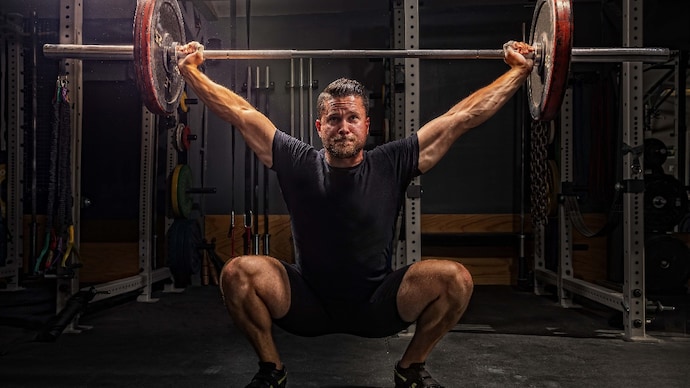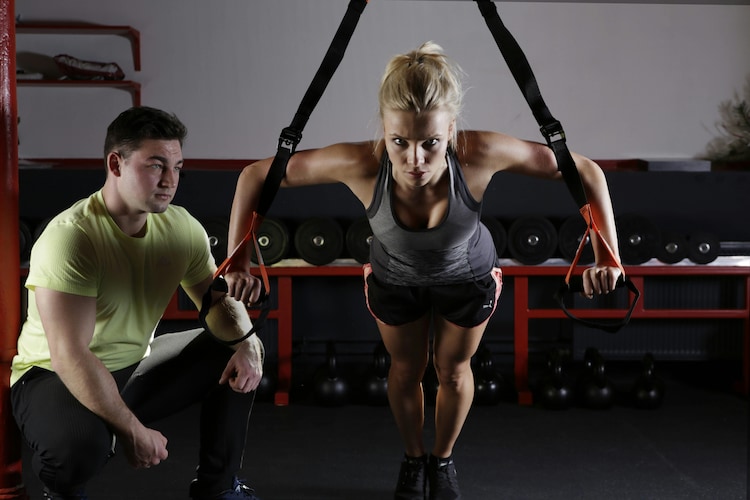How to be safe in gym, and avoid the risk of fatal injuries

Gym safety is once again a topic of discussion following the tragic death of national-level powerlifter Yashtika Acharya during a workout.
The 17-year-old died after a 270-kg weight she was attempting to lift fell on her neck during training at a gym in Rajasthan's Bikaner. She lost balance while lifting, causing the weights to fall on her.
Gym injuries are quite common. In India, shoulder, knee, and ankle sprains, along with lower back pain, are among the most prevalent ones. However, some injuries sustained while working out can also be fatal.
As a fitness enthusiast who exercises regularly in the gym, you can take several steps to ensure your safety. Those who are new or yet to embark on their gym journey should be extra cautious and prepared. Something as basic as keeping yourself hydrated or not missing out on the warm-up goes a long way in preventing mishaps.
Warming up
Warming up is a way to prepare your body for exercise. The idea is to gradually increase your heart rate and blood flow to your muscles before beginning a rigorous workout. Fitness experts highly recommend taking 5-10 minutes to warm up and cool down the body.
Research also suggests that warm-up routines help in reducing injury rates.
Maintaining proper form
“Always prioritise proper form and technique during exercise. It helps avoid injuries,” says Abhishek Singh, a Raipur-based fitness coach. Incorrect posture or form can lead to undue stress on muscles, ligaments, and joints, thereby increasing the risk of injury.
Take time to learn good form and technique from your instructor. Your form should never be compromised, whether you are in a hurry to finish sets or reps or struggling with a heavy weight.
“Even after you learn the technique, improving it should be a continuous pursuit,” says Yash Sharma, Delhi-based fitness influencer and entrepreneur.
Exercise warm-up
The importance of a general warm-up session is well known, but a specific warm-up before weight training is just as crucial.
“If you are going to lift 80 kg, it is important to do some warm-up reps with 20 kg, 40 kg, and 60 kg first,” says Yash Sharma.
Ego lifting
“Avoid the urge of ego lifting,” suggests Abhishek. Lifting excessive weight with poor form can cause joint damage and other injuries.
Training too hard is one of the common reasons for gym injuries.
Dichotomy of push and pull
In the gym, you target different muscle groups with various push and pull exercises. However, Yash suggests that the push-and-pull concept should also be applied in another way.
"Understanding the dichotomy of push and pull. The gym is a place where you are supposed to push your limits, but sometimes you need to pull back a little. This balance comes with experience, which is why consistency is imperative,” he says.
Listen to your body
Understanding your body's signals is crucial. If you experience unusual pain, excessive fatigue, or discomfort, it is important to rest or modify your training accordingly.
Have a spotter or a personal trainer
Lack of supervision is another prominent reason why many get injured in gyms. It is beneficial to have a personal trainer who guides you and ensures you are exercising with the correct form and technique.
Otherwise, you can also have a spotter, suggests Abhishek.
“Always have a spotter with significant knowledge and experience in weightlifting to assist you when lifting heavy weights, ensuring proper technique and providing immediate support if needed to prevent injuries,” he says.
Wear appropriate shoes
Shoes should have proper grip to avoid slipping and ensure stability.
“Wearing the right shoes for specific workouts is essential for maximising performance and preventing injuries,” shares Abhishek.
“Proper footwear provides better stability during movements like squats, lunges, and deadlifts, especially for individuals with specific foot mechanics, such as flat feet or high arches,” he adds.
Equipment awareness
You, of course, need to know your equipment and how it functions properly, not only to maximise your performance but also to avoid injury.
“While doing squats, use a safety bar to avoid serious injuries. Proper setup and a safety bar are very important for squats,” suggests Abhishek.
Similarly, before using benches and racks, make sure they are locked and stable. Adjust seats, handles, and weights to match your personal requirements and body mechanics. Before using any resistance band or cable, check for wear and tear—otherwise, they might snap and cause injury.
Don’t miss rest days
Giving your body time to recover from a heavy workout is essential. Otherwise, your muscles won’t have enough time to repair and grow, increasing the risk of fatigue, injury, and overtraining.
How safe are gyms in India?
Meanwhile, several gyms compromise the safety of fitness enthusiasts by hiring untrained professionals. Spotters and trainers should themselves be properly trained before supervising others in the gym.
All equipment should be regularly inspected to ensure safety. Damaged or faulty equipment should either be replaced or repaired. As gym-goers, it should also be a personal responsibility to maintain gym etiquette and keep equipment like dumbbells and barbells in their proper place after use to avoid tripping accidents.
Source: India Today


























































